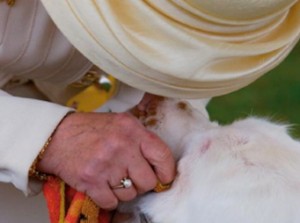Preservation Breeders – Canine Functions in a Changing World
132 – August, 2016
BY PERI NORMAN
 Improving the breed is an often-quoted motivation for breeding. In the world of purebred dogs this rationale is offered up primarily by show-oriented breeders. Debates have raged for years about what constitutes improvement in a breed. Breeders emphasizing function have long been at odds with “fancy” breeders. A study of German Shepherds published in 1934 and quoted in Bred for Perfection- Shorthorn Cattle, Collies and Arabian Horses since 1800 by Margaret E. Derry is said to conclude that “the modern German Shepherd has been so carefully bred for ‘show points’ that, to a great extent, it had lost much of its original value as a utility working dog.” Derry also frames the debate, “The question, in a nutshell, was How could “improvement” be achieved through breeding for fancy when such breeding led to a new type? Did dogs improved for shows also demonstrate improvement over original type, or could it be said that they represented a lack of quality because of the basic deviation from the older style? As breeds became more standardized to specific conformation standards, a question haunted many breeders. Was quality an issue of closeness to original type or should that type be molded into newer “improved” forms?” Nearly a hundred years later, the debate over what constitutes improvement rages on.
Improving the breed is an often-quoted motivation for breeding. In the world of purebred dogs this rationale is offered up primarily by show-oriented breeders. Debates have raged for years about what constitutes improvement in a breed. Breeders emphasizing function have long been at odds with “fancy” breeders. A study of German Shepherds published in 1934 and quoted in Bred for Perfection- Shorthorn Cattle, Collies and Arabian Horses since 1800 by Margaret E. Derry is said to conclude that “the modern German Shepherd has been so carefully bred for ‘show points’ that, to a great extent, it had lost much of its original value as a utility working dog.” Derry also frames the debate, “The question, in a nutshell, was How could “improvement” be achieved through breeding for fancy when such breeding led to a new type? Did dogs improved for shows also demonstrate improvement over original type, or could it be said that they represented a lack of quality because of the basic deviation from the older style? As breeds became more standardized to specific conformation standards, a question haunted many breeders. Was quality an issue of closeness to original type or should that type be molded into newer “improved” forms?” Nearly a hundred years later, the debate over what constitutes improvement rages on.
The relatively new phenomenon wherein dog breeders have begun embracing the term “preservation breeder” challenges us to address this age-old debate yet one more time. The issues are complex. Reputable breeders struggle with these questions and concerns in thoughtful fashion and should be able to articulate their reasoning within the context of their own breeding programs. There are no right or wrong answers unless or until the quality of life for the dogs and the owners are compromised.
The question of historical purpose might be the most logical place to begin our discussion. Does the function for which a given breed was developed still exist in any numerically and/or socially acceptable fashion? Rhodesian Ridgebacks, Akitas, Bulldogs and American Staffordshire Terriers are examples of breeds whose original purpose is either virtually extinct or (appropriately) illegal in our society. Reputable breeders have and continue to improve temperaments and to preserve these breeds. Yet, we must ask, how much variation from their progenitors is acceptable? When have we crossed the line from preservation and improvement to the creation of a new breed masquerading under an old name? Clearly, temperaments must be modified to some degree, but without the counterbalance of a functional task to measure the form to, how often and how far can we stray from the original before it is lost anyway?
Click here to read the complete article132 – August, 2016
Short URL: https://caninechronicle.com/?p=110027
Comments are closed











